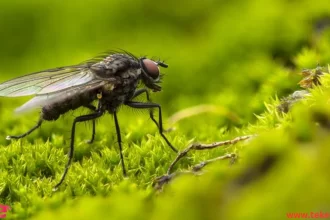Armadillos are found in the southern half of the United States and are classified as pests due to their tendency to dig large burrows and small holes in yards. Therefore, people complain that armadillos dig large tunnels under their homes and destroy the landscape, as they dig burrows so extensively that they end up cracking or damaging the concrete.
In this article in TekeTrek Website, we will introduce you to the most important information related to this object. Follow along with us.
The external appearance of the armadillo
- The full, more famous name of the armadillo is “the armored one,” and its appearance is that of a small mammal, weighing about thirteen pounds approximately, and covered with a hard outer layer considered as armor. The armadillo belongs to the phylum Chordata, from the class Mammalia.
- The armadillo belongs to the phylum Chordata, from the class Mammalia.
- In fact, its name is derived from the fact that this armor is made of a bony plate containing nine different sections. The armored one has a rectangular shape with a triangular head and very close ears.
- The armadillo is active during the period between dusk and early morning hours, especially in the summer, but in winter, it is active during the day.
- The armadillo does not have only one den; it has several dens in the area it inhabits and uses these dens as a means of escape if needed.
- Despite its poor vision, the armadillo has a strong sense of smell, and it may seem exhausted and lethargic, but in reality, it is very agile and can escape quickly when threatened. It is also a skilled swimmer and capable of walking across the bottom of small streams.

The life cycle of the armadillo
The average lifespan of an armadillo ranges from twelve to fifteen years in captivity, but it can exceed these numbers in the wild.
Habitats of the armadillo
- The armadillo prefers the cover of dense and shaded places such as bushes, forests, and near streams or rivers. Soil is also an important habitat for this animal, and it prefers sandy soil that is more flexible and more porous.
- It also prefers places that are not extremely cold or hot.
- The armadillo likes to inhabit places with cracks as they are very suitable for making burrows.
The diet of armadillos
- The armadillo’s diet consists of insects and other invertebrates, and to find them in the soil, it uses its sense of smell. However, it also eats carrion and small amphibians if necessary.
- They use their tongues to collect insect colonies and larvae, including earthworms, scorpions, and spiders. It also eats snakes and eggs of frogs, lizards, salamanders, and snakes, for example.


Armadillo Behavior
- The armadillo can jump up to three feet in the air when it feels threatened or scared, which can be very dangerous for drivers, especially at night when visibility is at its lowest.
- Another way it defends itself is by hiding. When an armadillo is frightened, it digs a hole and anchors itself inside, using this method even the most persistent predators will eventually give up and look for easier prey.
- These armored animals can create a complex and extensive burrow system with up to twelve intersecting tunnels. Surprisingly, both females and males are solitary.
- As nocturnal animals, armadillos perform most activities, such as foraging, eating, digging, and mating at night.
- During daylight hours, they spend up to 16 hours sleeping, usually in their burrows.
- Armadillos are skilled swimmers and can hold their breath for 4-6 minutes, and they can walk underwater across stream beds. When facing large bodies of water, these animals swallow air to create buoyancy and then paddle. This swimming ability has allowed them to expand their range.
Armadillo Reproduction Stages
- After a gestation period ranging from two to five months, the female gives birth to 1 to 12 young in the birthing burrow, which can be up to 4.5 meters wide.
- The young armadillos are called pups, and according to the San Diego Zoo, the birth of twins is common.
- Typically, an armadillo will have four identical pups of the same sex at one time.
- The pups mature quickly, weaned after two to four months. By the age of nine to twelve months, the pups are mature and ready to have offspring of their own. Armadillos can live anywhere from four to thirty years.
FAQs about armadillos
- Are armadillos extinct?
The armored animal, which Brazil adopted as the emblem of the World Cup, is considered one of the animals threatened with extinction since the last half century, and the main reason is the presence of risks threatening its living environment due to the encroachment of residential buildings and drought.
- What does an armadillo look like?
The armadillo’s body is covered with a hard, armor-like layer, which is why it was given this name. This animal has very long and sharp claws to enable it to dig easily.
- Where do armadillos live?
The truncated armadillo or dwarf armadillo is a small species of armadillo (12-15 cm long) that is found in west-central Argentina.
- Are armadillos toothless?
The fairy armadillo is the smallest toothless creature ever
- Are armadillos a rodent?
It is a type of animal belonging to the genus Hokkal, of the squirrel family
In short, the armadillo is a small mammal with poor eyesight and a strong sense of smell that lives in the southern half of North America.






